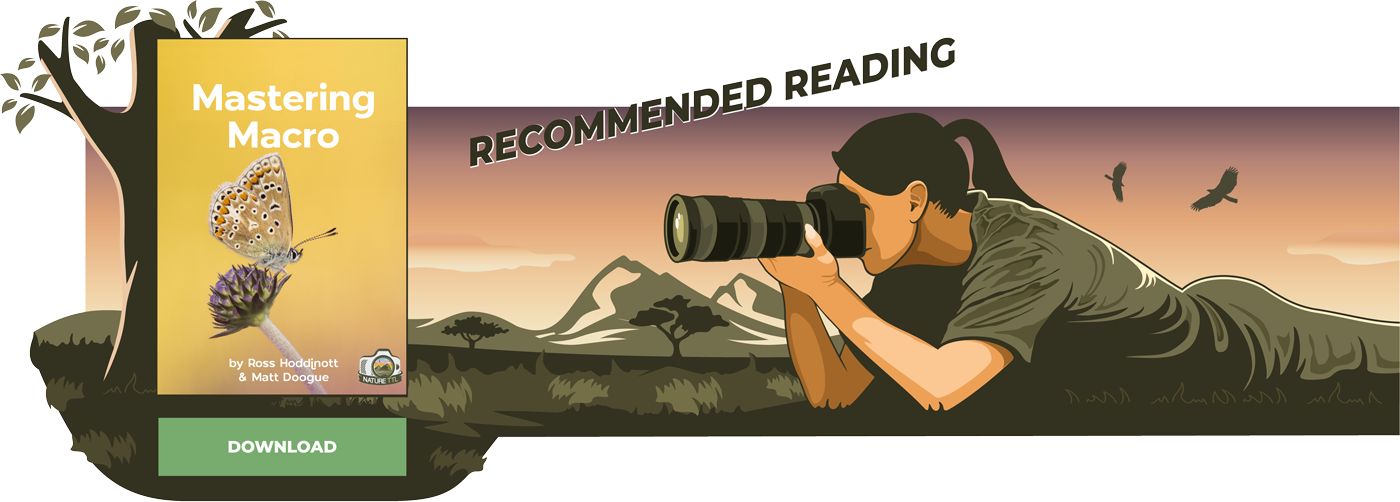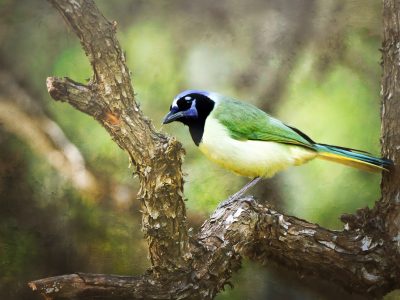How to Use Negative Space in Macro Photography

It might puzzle you that, despite being a close-up enthusiast, I rarely fill the frame with my subject. I like to embrace negative space in photography.

The frame-filling, tightly composed portraits of insects and bugs – that seem to be all the rage currently – often leave me a little cold. While up-close, head-on portraits are undeniably impactful, they leave nothing to the imagination.


They rarely convey any sense of size or context and, while they are technically impressive, they arguably lack originality and (dare I say) artistry.
This is in no way a dig at stacked, extreme portraits, it is just a matter of personal taste. Increasingly, I’m taking a step back from my close-up subjects to record them smaller in frame.

Instead, I’m trying to place added focus on the colour, texture, and quality of my subject’s surroundings – the area photographers commonly refer to as ‘negative space’ that has a significant influence on scale, balance, and perception.
Read on to discover more about how to effectively use negative space in your close-up images…
Read more: 6 Tips for Creative Macro Photography
What is negative space in photography?
A dedicated macro lens is capable of a high level of magnification. Most provide a maximum reproduction ratio of 1:1 (life-size), while others offer even greater degrees of magnification.
With a macro lens attached, it is tempting to get as close to your subject as possible to capture it in frame-filling glory – after all, macro photographers are conditioned to place the utmost attention on their subject and detail.

However, while portraits undeniably boost instant impact, they don’t necessarily maintain the viewer’s attention long.
Shots can appear quite static, relying on the subject’s colour, detail, and design for their impact, rather than the quality of light, bokeh, and the overall strength of the composition. Quite simply, don’t underestimate the influence of including negative space.
So, what exactly is negative space?
While the subject itself is often referred to as positive space, the area surrounding the main focus – including foreground and background – is considered negative space. Put simply, it is visual breathing room.

This space should be active in some way – helping to tell a story or maybe conveying a sense of size or isolation. There should be a definite interplay between the subject and its surroundings, with the subject typically looking or directed toward it.
How much space you should include is entirely subjective and will be dictated by the subject, surroundings, and personal taste.
Some photographs are dominated by negative space and can be considered minimalist in style, with a single lone subject surrounded by emptiness. However, close-up photographers are less likely to go to this extreme.

Some photographers like to follow the 2:1 negative space rule, a practice where you have two-parts negative space for every one-part of positive space.
I would, however, encourage you not to think about the ratio of negative space to positive space too consciously.
Instead, try composing your shots intuitively, allowing the subject and its surroundings to dictate the combination.
Read more: How to Compose a Macro Photo
Why is negative space useful in composition?
One of the key benefits of including negative space is its ability to provide harmony and balance with your subject.
While positive space should be powerful and impactful, negative space should be more subtle and compliment the subject, while remaining free of any nasty distractions.

You should avoid including any clutter or chaos in your negative space – smooth areas of tone, a wash of colour, or attractively diffused, out-of-focus detail typically works best.
In practice, a subject’s surroundings can be just as important – if not more so – than the subject itself. You need to carefully consider the look of negative space; get it wrong, and it will detract from the image, rather than enhance it.
Macro and close-up photographers are accustomed to working with a shallow depth of field.
While the limited zone of sharpness associated with shooting at higher magnifications can be tricky to manage, it can also help provide buttery smooth backdrops and visually pleasing bokeh with minimum effort.

However, popular close-up subjects, like butterflies, dragonflies, spiders, and reptiles, are often found in busy, chaotic environments, making it harder to separate them from their surroundings and balance them against flattering areas of emptiness.
If you are unable to place any distance between your subject and surroundings, a frame-filling composition is arguably your best bet, allowing you to exclude all distractions.
However, compositionally speaking, your shot won’t be as satisfying or stimulating.
Good subject selection is key. Choose your subject thoughtfully – prioritizing subjects located in positions where it is possible to include attractive negative areas, free of ugly detail or distracting colour or texture.

Sky, water, sand, and distant foliage will often provide clean and colourful negative space.
White sky will allow you to capture high-key results – or align your subject with an area of deep shade to produce an inky black, low-key effect.
Specular highlights can produce beautiful bokeh and fill your negative space with gorgeous circles of light. Look for bubbles, ripples in water, wet sand, dewy foliage, or anything that will reflect a small point of light.

Select a largish aperture and contrast your subject against the big balls of light forming a pattern. Subjects with a strong, instantly recognizable outline – a dragonfly, for instance – suit being silhouetted against bright, glittering highlights.
Read more: Backlighting in Macro Photography
Showing your subject’s habitat and surroundings
Of course, negative space doesn’t need to be soft and diffused – it can equally be a texture or habitat.
For example, if your subject is resting or basking on an object that is colorful or textured, maybe a backlit leaf, bark, or sand, select a smaller f/stop to generate a larger depth of field.
By doing so, you should record both your subject and its surroundings sharply, and the color, texture, and detail of its background will provide harmonious negative space and a compelling sense of place.

Negative space will really help you convey the scale of your subject relative to its surroundings if you include comparable objects within the frame.
Doing so can be particularly effective with macro subjects, highlighting just how small and fragile they are in relation to the world around them.
When negative space contains a slice of recognizable habitat, you are subtly informing the viewer about the subject’s habitat and situation.
Negative space can really help tell a story, but with environmental portraits of this ilk, the subject must stand out sufficiently – be careful that its impact and placement don’t get diluted by its surroundings.
The habitat should frame and complement your subject, not be visually distracting.
Close-up photographers are typically working with fixed focal lengths – either a macro or a short prime lens coupled with a close-up attachment.
Therefore, you physically need to step back from your subject to generate negative space, as opposed to simply zooming.

The other benefit of working further away from live subjects is you reduce the chances of disturbing it. You are also more likely to be able to rely on natural light.
When working close to subjects, light and depth of field are more restricted, heightening the need to focus stack and use artificial light.
With your subject smaller in frame, inevitably the viewer will see less detail, but overall, the composition should feel less cramped and be more engaging.
Read more: The Best Habitats for Macro and Insect Photography
In conclusion
When you next use your macro lens, fight the urge to simply fill the frame, unless you are convinced doing so is genuinely the best option.
Allow your subject to breathe and compose your shots thoughtfully, and creatively, and don’t be scared to be bold or daring.
You want your close-ups to feel balanced and engage or even provoke the viewer. Keep things simple – eliminate distractions. Negative space is a powerful tool that you shouldn’t overlook.
Now, go try it for yourself…





